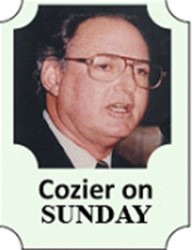It is not difficult to imagine Rangy Nanan going to his grave with a wry smile on his lips.
 The most successful bowler in West Indies cricket in a first-class career between 1973 and 1991, the heavy-set Trinidad and Tobago off-spinner was restricted to a solitary Test by the numerical strength of Clive Lloyd’s battering-ram attack that was the foundation of the team’s record 15 years without the loss of a series.
The most successful bowler in West Indies cricket in a first-class career between 1973 and 1991, the heavy-set Trinidad and Tobago off-spinner was restricted to a solitary Test by the numerical strength of Clive Lloyd’s battering-ram attack that was the foundation of the team’s record 15 years without the loss of a series.
Before his death on Wednesday, aged 62, after a lengthy battle against ill health, Nanan had witnessed the sharp decline in fast bowling stocks and the continuing, as yet, futile fixation with replenishing them to the disadvantage of spin.
Just days before his passing, Richard Pybus, the West Indies Cricket Board’s director of cricket, spoke of a series of camps and off-season training programmes for fast bowlers as ‘part of a plan to rekindle an area of the game that has been struggling in recent years’.
Memories of George John, George Francis, Manny Martindale and others of the early days still linger alongside those of Hall and Griffith, Lloyd’s formidable group and Ambrose and Walsh of the modern era.
The only regular fast bowlers in the Test team at present are Jerome Taylor and Kemar Roach, both with over 100 wickets at the highest level, yet their effectiveness is waning. In the three most
